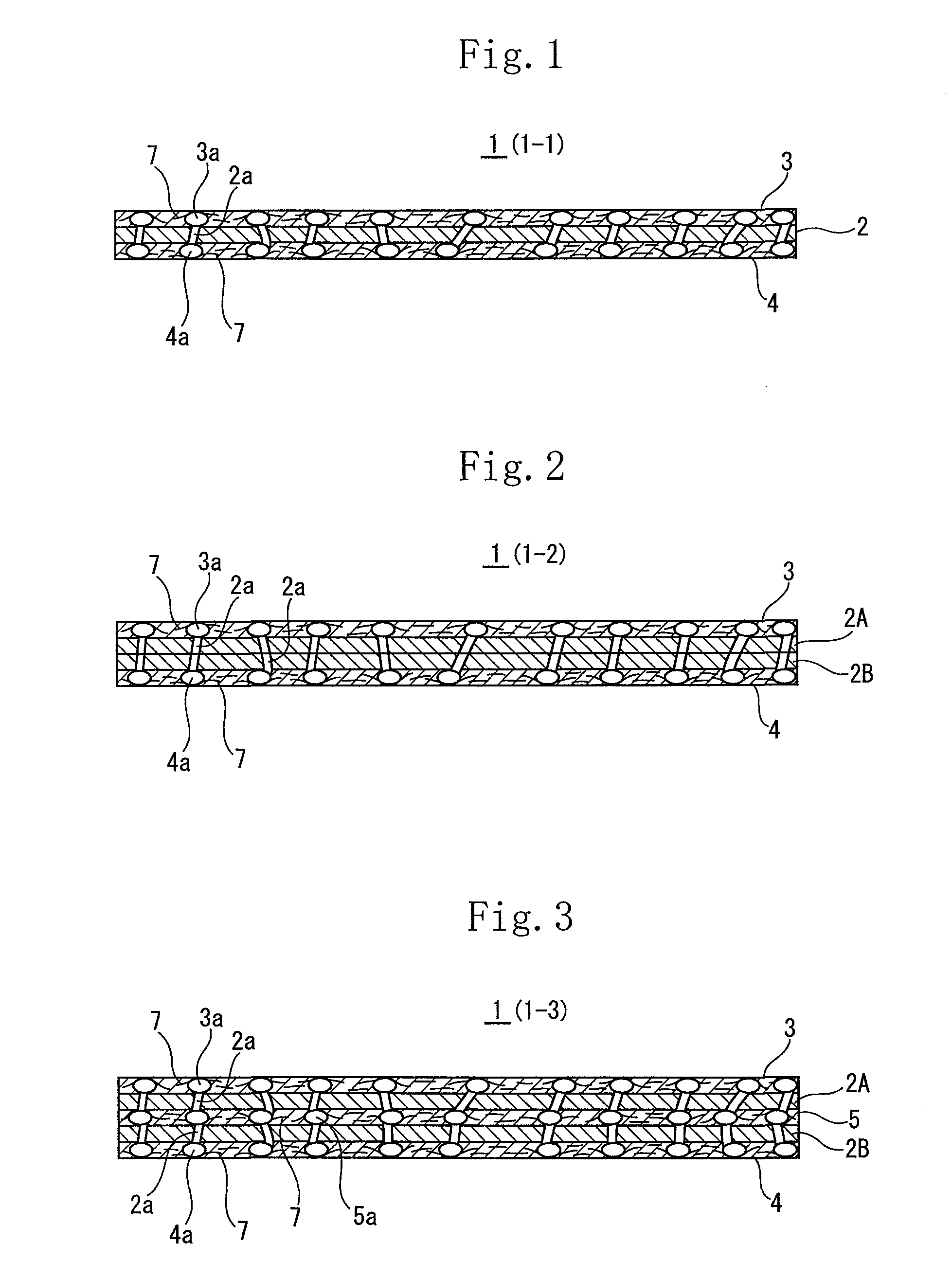Method for producing porous laminate and porous laminate
a technology of porous laminate and porous film, which is applied in the field of producing porous laminate and porous laminate, can solve the problems of large amount of organic solvent, unpreferable for environment, and inability to produce porous film, and achieve the effect of wide production condition and small amount of load to environmen
- Summary
- Abstract
- Description
- Claims
- Application Information
AI Technical Summary
Benefits of technology
Problems solved by technology
Method used
Image
Examples
example 1
[0267]As preparation of a resin composition composing both outer layers, 100 parts by mass of high-density polyethylene and 100 parts by mass of barium sulfate were blended with each other to form a compound. In the example 1, the compound did not contain a plasticizer.
[0268]The compound was used as both outer layers, and a thermoplastic resin composition composed of polypropylene containing ethylene-propylene rubber was used as the polypropylene resin composition composing the interlayer.
[0269]The ratio among the outer layer 1, the outer layer 2 and the interlayer was adjusted to the outer layer 1 / the interlayer / the outer layer 2=25 / 50 / 25. By using a multi-layer forming T-die, both resin compositions were molded at a temperature of 200° C. to obtain a laminate composed of three layers made of two kinds of the resin compositions.
[0270]After the obtained laminate was put in a pressure container, carbon dioxide which is an inactive gas was enclosed in the pressure container at a norma...
examples 2 through 5
[0272]The porous laminates of the examples 2 through 5 were obtained in a manner similar to that of example 1 except that the resin composition composing both outer layers contained a plasticizer consisting of hardened caster oil and that the stretching condition was altered, as shown in table 1.
examples 6 , 7
Examples 6, 7
[0273]The porous laminates of the examples 6, 7 were obtained in a manner similar to that of the examples 2 through 5 except that the resin composition composing both outer layers was composed of a polypropylene homopolymer and an ethylene-propylene rubber.
TABLE 1OUTERMOST LAYER 1INTERLAYEROUTERMOST LAYER 2THERMO-OTHERCOMPO-POLYPROPYLENETHERMO-OTHERCOMPO-PLASTICCOM-SITIONRESINPLASTICCOM-SITIONRESINFILLERPONENTSRATIOCOMPOSITIONRESINFILLERPONENTSRATIOEXAMPLE 17000FPB55NONE50 / 50 / 0ZELAS50137000FPB55NONE50 / 50 / 0EXAMPLE 27000FPB55HCOP47 / 50 / 3ZELAS50137000FPB55HCOP47 / 50 / 3EXAMPLE 3HY430P30NCHCOP67 / 30 / 3ZELAS5013HY430P30NCHCOP67 / 30 / 3EXAMPLE 47000FPB54HCOP37 / 60 / 3ZELAS50137000FPB54HCOP37 / 60 / 3EXAMPLE 57000FPB55HCOP47 / 50 / 3ZELAS50137000FPB54HCOP37 / 60 / 3EXAMPLE 67000FPB55HCOP47 / 50 / 3F104A / T310V50 / 507000FPB55HCOP47 / 50 / 3EXAMPLE 77000FPB55HCOP47 / 50 / 3F104A / T310V25 / 757000FPB55HCOP47 / 50 / 3COMPARISONFILM OF EXAMPLE 1 OF JAPANESE PATENT APPLICATION LAID-OPEN NO. 05-025305EXAMPLE 1COMPARISONFILM OF ...
PUM
| Property | Measurement | Unit |
|---|---|---|
| particle diameter | aaaaa | aaaaa |
| heat shrinkage percentage | aaaaa | aaaaa |
| height | aaaaa | aaaaa |
Abstract
Description
Claims
Application Information
 Login to View More
Login to View More - R&D
- Intellectual Property
- Life Sciences
- Materials
- Tech Scout
- Unparalleled Data Quality
- Higher Quality Content
- 60% Fewer Hallucinations
Browse by: Latest US Patents, China's latest patents, Technical Efficacy Thesaurus, Application Domain, Technology Topic, Popular Technical Reports.
© 2025 PatSnap. All rights reserved.Legal|Privacy policy|Modern Slavery Act Transparency Statement|Sitemap|About US| Contact US: help@patsnap.com



